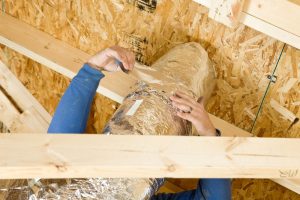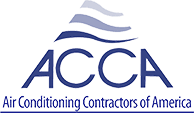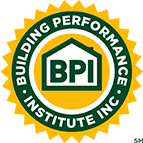 When you live in as hot and humid a climate as ours, chances are you think about your air conditioner a fair amount. You want it to perform effectively and efficiently as possible after all, right? What you probably don’t think too much about, though, is the “V” part of HVAC. That is, your ventilation system—or it’s more commonly known name, your ductwork.
When you live in as hot and humid a climate as ours, chances are you think about your air conditioner a fair amount. You want it to perform effectively and efficiently as possible after all, right? What you probably don’t think too much about, though, is the “V” part of HVAC. That is, your ventilation system—or it’s more commonly known name, your ductwork.
This ductwork connects your air conditioning in Live Oak, FL to the outside, enabling the distribution of cooled air. Your air ducts are typically out of sight, too, hidden behind walls, beneath floors, or in your attic or crawlspace. Unfortunately, in these locations it’s hard to see if something is wrong, and harder to see if your ductwork was improperly installed. If it was put in by an amateur, or even if your ductwork is aging, then it likely has accumulated damage that can lead to leaks.
And if your ductwork is impacted by leaks from poor connections, improper construction, or some other reason, you aren’t receiving the cooling efficiency that you should be. One of the most common reasons for ductwork problems is that it wasn’t properly sized for the home to begin with by the installer.
Why Do Poorly Sized Ducts Lead to Damage?
We want to first start by saying that if your air ducts aren’t sized correctly, you will likely notice soon after the new cooling system is installed, since it will make noise due to the restriction or blockage of airflow. Unfortunately, many homeowners hear this and just assume it’s a noisy air conditioner. This shouldn’t be the case though, particularly if it’s a brand new air conditioner.
When your air ducts are too big for the air conditioner to which they’re connected, it causes reduced airflow. This results in uneven cooling, since conditioned air won’t be able to reach all of your vents. Studies show that improper duct design and/or installation can lead to as much as a 60% loss in cooling (and heating) efficiency.
This is a strain on your wallet, of course. But it’s also bad news for your HVAC system, since it will struggle to reach the desired temperature you set for it. As a result, your air conditioner or heater will start to degrade and age faster than it would have otherwise. This means more repairs to components like motors, fan belts, and compressors—plus you may find yourself facing a premature system replacement and the subsequent expense of purchasing a new one.
Other Types of Ventilation Problems
Whether your ductwork is improperly sized or it has bad connections, poorly installed ventilation may not be connected the right way, and therefore you’ll suffer from air leaks. This isn’t the worst thing that can happen to your air conditioner, but you’ll certainly notice a reduction in cooling power from your AC as a result, in addition to heating power from your heater.
Pinhole leaks in ducts are another problem to be aware of. This usually only occurs in older ductwork, particularly if it’s in a significantly hot space, such as your attic.







